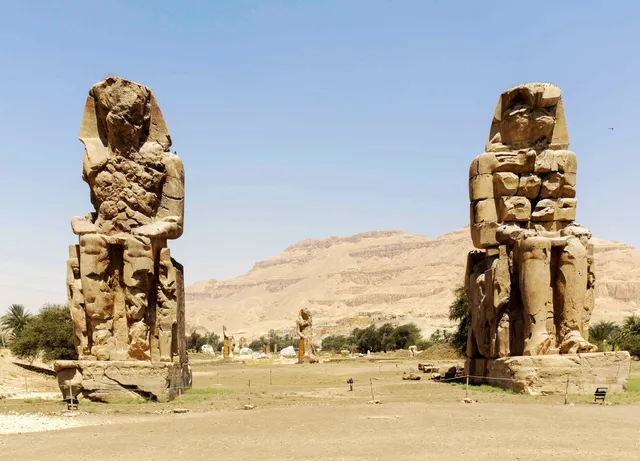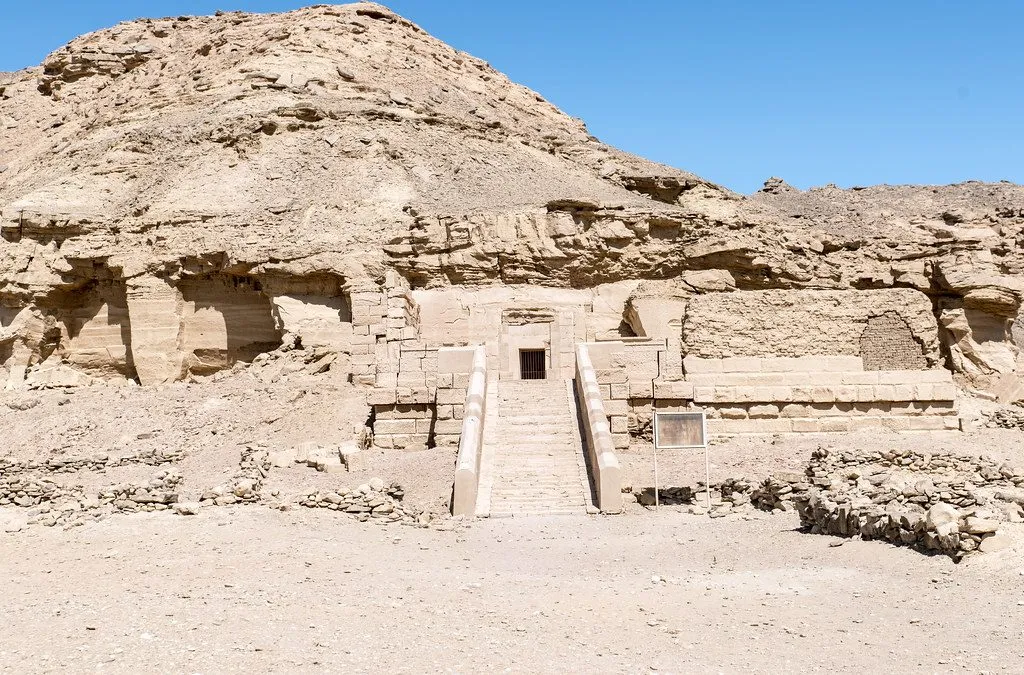Unveiling Egypt's Hidden Treasures: Top Off-the-Beaten-Track Destinations
- Walter Ponce
- Dec 18, 2023
- 4 min read
Egypt, with its iconic pyramids and legendary temples, is a traveler's paradise. Yet, beyond the well-trodden paths to the Pyramids of Giza and the temples of Luxor, there's a world of hidden gems waiting to be explored. In this article, I will take you off the beaten track and introduce you to some lesser-known but equally enchanting destinations in Egypt that are sure to ignite your sense of adventure and curiosity.
1. Edfu Temple
Edfu Temple, also known as the Temple of Horus, is a magnificent ancient Egyptian temple located in the town of Edfu, on the west bank of the Nile River. This well-preserved temple, one of the most significant and complete examples of Ptolemaic architecture, was dedicated to the falcon-headed god Horus and his consort Hathor. Constructed during the Ptolemaic dynasty, specifically between 237 and 57 BCE, Edfu Temple is a masterpiece of classical Egyptian architecture, featuring grand pylons, towering columns, intricately carved reliefs, and a monumental courtyard. The temple's historical and architectural significance, along with its stunning state of preservation, make it a remarkable destination for both historians and tourists, providing a vivid window into the religious and cultural life of ancient Egypt.
2. Colossi of Memnon
The Colossi of Memnon are a pair of massive stone statues located on the western bank of the Nile River near Luxor, Egypt. These towering statues, each standing approximately 60 feet tall, were carved from single blocks of quartzite and originally adorned the entrance to the mortuary temple of Pharaoh Amenhotep III, who reigned during the 14th century BC. Though they have weathered thousands of years, these colossal figures continue to captivate visitors with their sheer size and intricate details, offering a glimpse into the grandeur of ancient Egyptian civilization. The name "Colossi of Memnon" is derived from the Greek mythological figure Memnon, and the statues were associated with a phenomenon where they produced a musical sound at dawn due to temperature changes, which led to their fame and subsequent visits by travelers in ancient times. Today, they stand as silent sentinels, bearing witness to a distant era of Egyptian history.
3. Pyramid of Djoser
The Pyramid of Djoser, located in Saqqara, Egypt, is a remarkable architectural wonder that stands as a testament to the ancient civilization's ingenuity. Built during the 27th century BCE for Pharaoh Djoser, it is considered the world's earliest monumental stone structure and a precursor to the more famous pyramids at Giza. Designed by the brilliant architect Imhotep, the pyramid is a step pyramid, consisting of six mastabas stacked atop one another to create a series of terraced levels, showcasing a revolutionary architectural style for its time. It represents a significant shift from earlier burial mound traditions and marks the transition to the iconic pyramid structures that would define Egypt's Old Kingdom. Djoser's pyramid complex also includes a mortuary temple, causeway, and enclosure wall, all contributing to its historical significance and enduring allure as a testament to the ancient Egyptian civilization's architectural and engineering prowess.
4. Temple de Khnum
The Temple of Khnum, located in the ancient city of Esna along the Nile River in Egypt, is a remarkable archaeological site that dates back to the Ptolemaic period, around 237 BCE. Dedicated to the Egyptian deity Khnum, the god of the Nile's inundation and a master potter who created human beings on his pottery wheel, this temple showcases exquisite architectural and artistic details. One of its most striking features is the well-preserved hypostyle hall, characterized by towering columns adorned with intricate hieroglyphics and reliefs that depict various religious and mythological scenes. The Temple of Khnum stands as a testament to the enduring legacy of ancient Egyptian culture, drawing visitors from around the world to marvel at its historical and artistic significance.
5. El Kab Tombs
The El Kab tombs, located in the ancient Egyptian archaeological site of El Kab, offer a fascinating glimpse into the history and funerary practices of this ancient civilization. Dating back to the Middle Kingdom and the New Kingdom periods, these tombs are carved into the rugged cliffs overlooking the Nile River, making them a striking feature of the landscape. The site contains a variety of tombs, including rock-cut tombs and mastabas, which served as the final resting places for individuals of different social statuses. The intricate hieroglyphics, vivid artwork, and detailed inscriptions adorning the tomb walls provide valuable insights into the lives, beliefs, and customs of the people buried there, making the El Kab tombs an important archaeological treasure for understanding the rich heritage of ancient Egypt.
6. Gebel el Silsila
Gebel el-Silsila, an ancient quarry site located along the banks of the Nile River in Egypt, holds a significant place in the history of Egyptian civilization. This archaeological treasure, comprising two sandstone quarries, was utilized extensively during the New Kingdom period (circa 16th-11th centuries BCE) to extract the high-quality sandstone that adorned many of Egypt's most iconic temples and monuments. It not only served as a vital source of construction material but also bears inscriptions and rock-cut shrines dedicated to various Pharaohs and deities, shedding light on the religious and artistic aspects of ancient Egyptian society. Today, Gebel el-Silsila stands as a remarkable testament to the craftsmanship and industry of the ancient Egyptians, providing invaluable insights into the architectural and artistic legacy of this remarkable civilization.
Conclusion
While Egypt's iconic landmarks are undeniably awe-inspiring, the country's off-the-beaten-track destinations hold their own magic. Exploring Edfu Temple, Al Bairat, the Pyramid of Djoser, Temple de Khnum, El Kab, Horus Temple, and Gebel el Silsila offers a unique opportunity to delve into the lesser-known facets of Egypt's rich history and culture. These hidden treasures, with their lesser crowds and serene atmospheres, will leave you with a profound sense of wonder and a deeper understanding of the captivating world of ancient Egypt. So, the next time you visit this historic land, don't forget to venture beyond the tourist hotspots to discover these remarkable gems.


































コメント